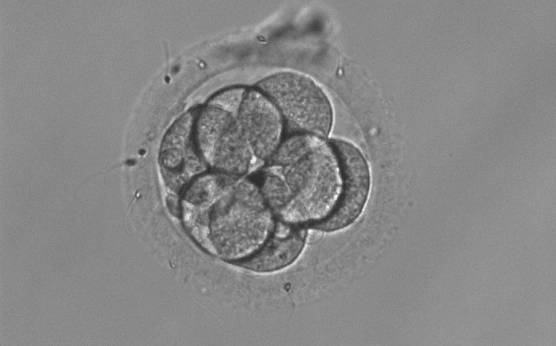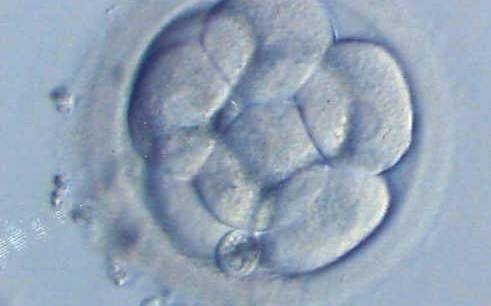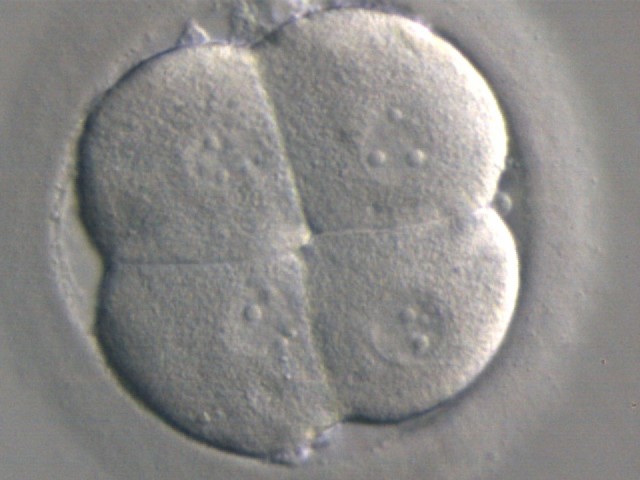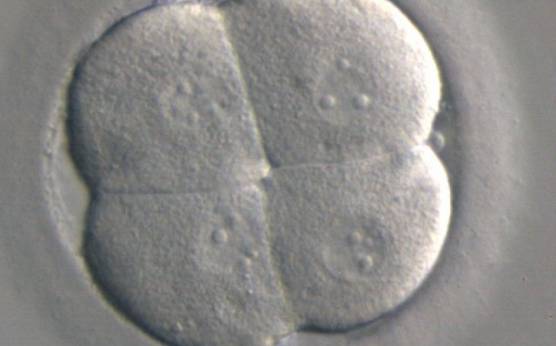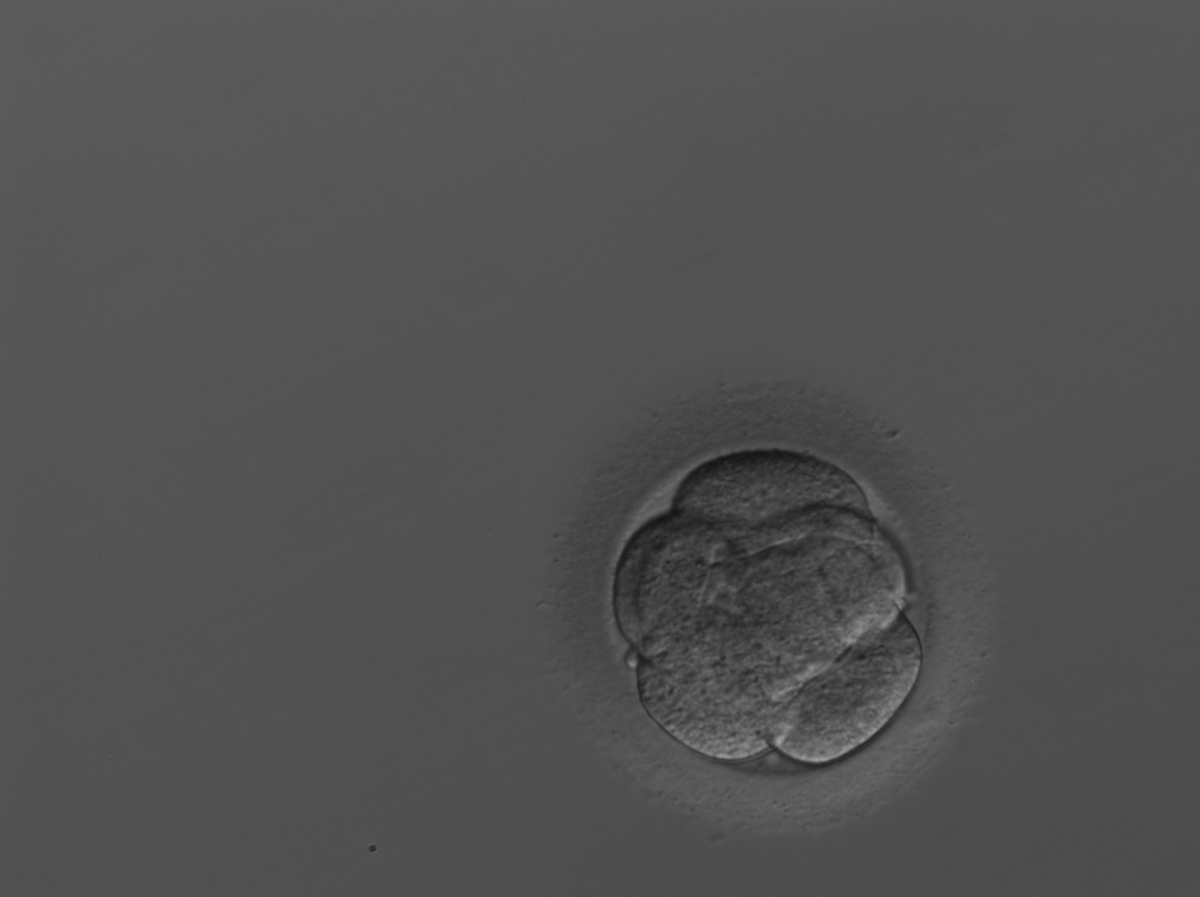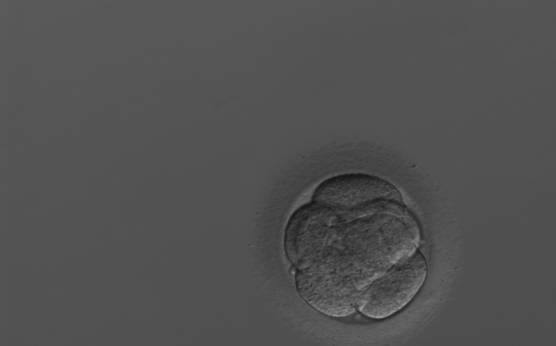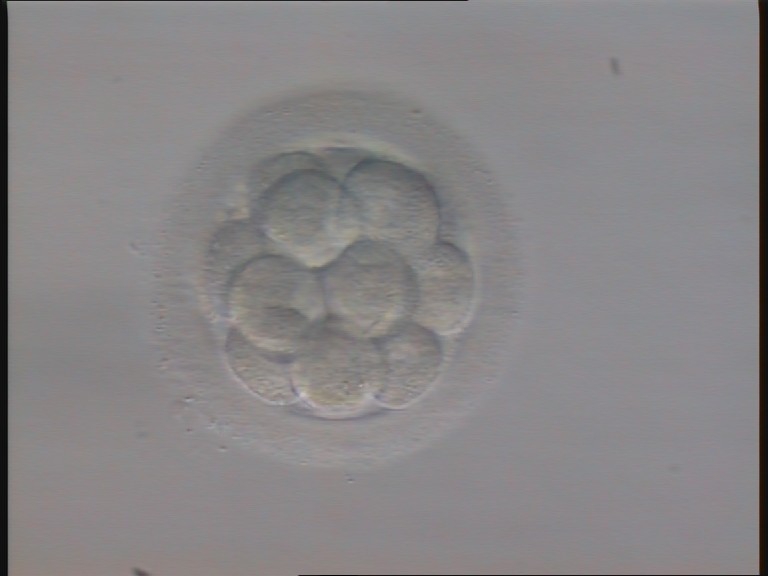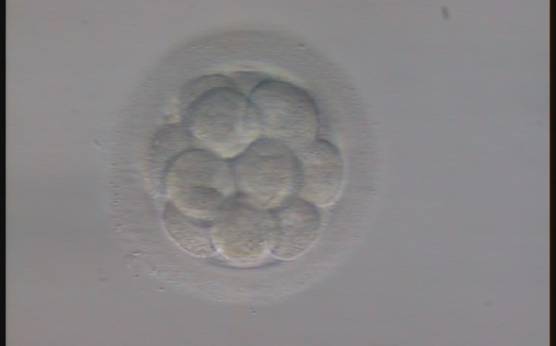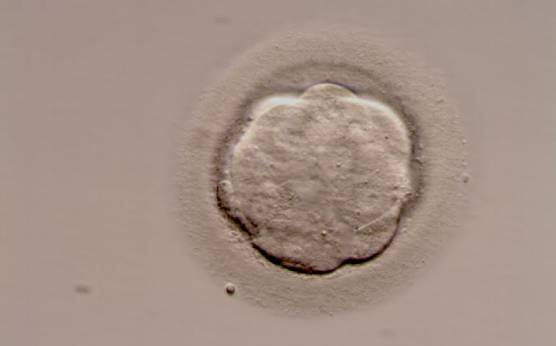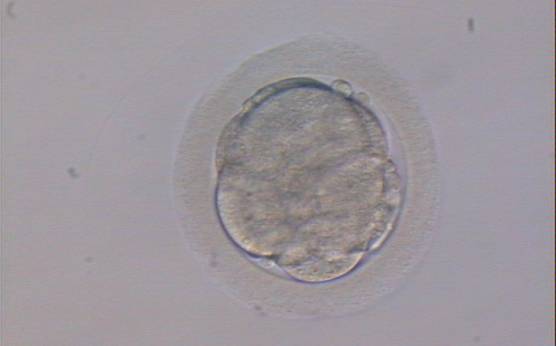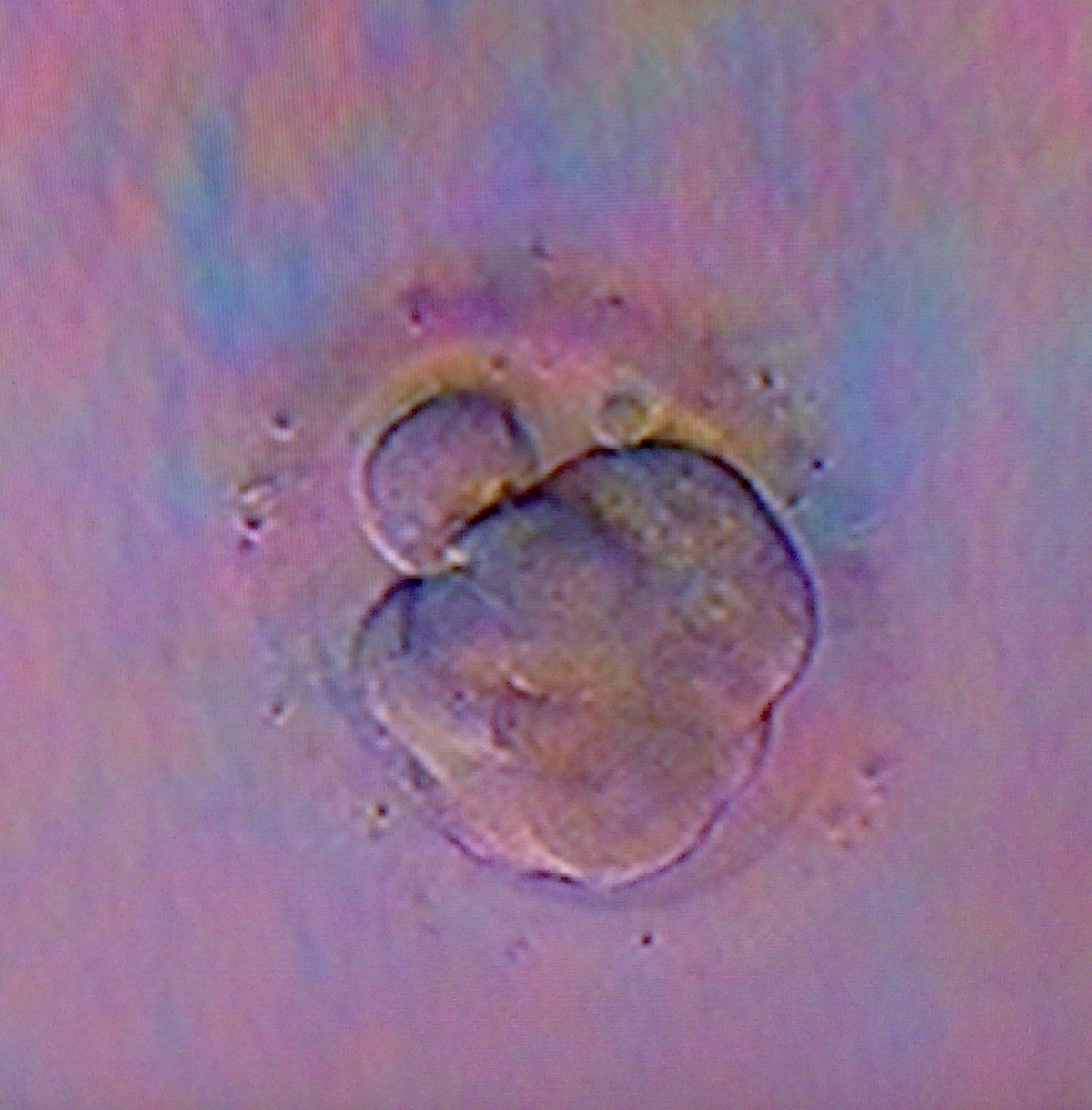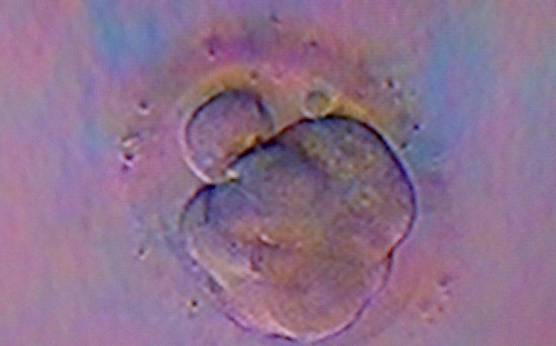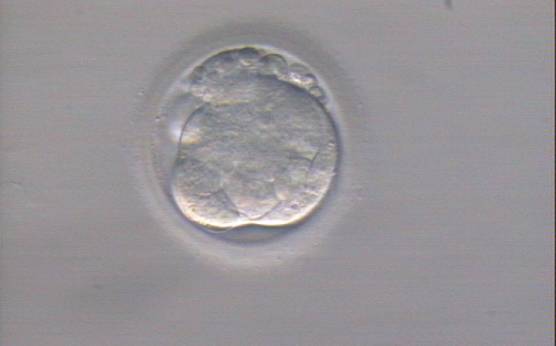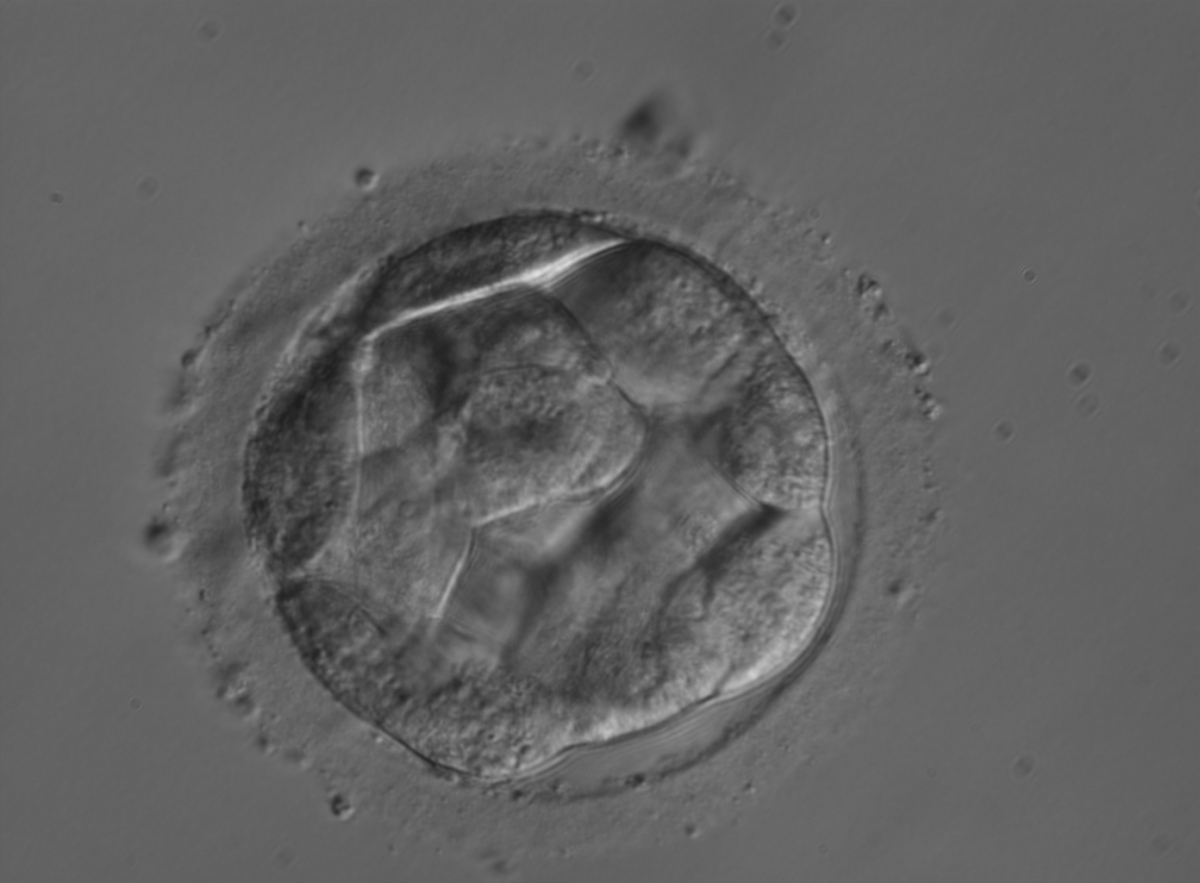G. Compaction
The human embryo appears as an indistinguishable mass of cells on Day 4 of development, the morula. A good quality morula is composed of 16–32 blastomeres and all of the blastomeres should be included in the compaction process (Tao et al., 2002).
The increase in cell-to-cell adherence should begin at the 8-cell stage and then progress rapidly with time (Figs 291–293). The cell adhesion protein E-cadherin changes in distribution from the cytoplasm to the cell membrane. Cell junctions between cells, in particular tight junctions, begin to spread (Alikani, 2005). This process has been linked to activation of the embryonic genome (Desai et al., 2000) and is therefore considered to be a good sign of the developmental capacity of the embryo. Culture media composition and other environmental conditions can also play a role in the kinetics of an early compaction event.
Compaction can be observed in embryos before the 8-cell stage (Figs 294 and 295), while embryos with more than 10 blastomeres that do not show signs of compaction are uncommon (Fig. 296). A study by Skiadas et al. (2006) showed that early compacted embryos had an increased implantation potential; however, this was only true for good quality embryos (<10% fragmentation).
The Istanbul consensus has established that for a Day 4 embryo to be considered of good quality, all cells must be included in the morula (Fig. 297), while those embryos in which some cells or fragments are excluded from the compaction process (Figs 298–300) have a decreased probability of implantation.
The outer cells of compacted embryos have probably lost their totipotency as they are bound to form the trophectoderm (Cauffman et al., 2009). The next phase of development is the beginning of cavitation that leads to the formation of the blastocyst (Figs 301 and 302).
Article references:
Alikani M. Epithelial cadherin distribution in abnormal human pre-implantation embryos. Hum Reprod 2005;20:3369-3375.
Abstract/FREE Full Text
Cauffman G, De Rycke M, Sermon K, Liebaers I, Van de Velde H. Markers that define stemness in ESC are unable to identify the totipotent cells in human preimplantation embryos. Hum Reprod 2009;24:63-70.
Abstract/FREE Full Text
Desai NN, Goldstein J, Rowland DY, Goldfarb JM. Morphological evaluation of human embryos and derivation of an embryo quality scoring system specific for day 3 embryos: a preliminary study. Hum Reprod 2000;15:2190-2196.
Abstract/FREE Full Text
Skiadas CC, Jackson KV, Racowsky C. Early compaction on day 3 may be associated with increased implantation potential. Fertil Steril 2006;86:1386-1391.
CrossRef | Medline | Web of Science | Google Scholar
Tao J, Tamis R, Fink K, Williams B, Nelson-White T, Craig R. The neglected morula/compact stage embryo transfer. Hum Reprod 2002;17:1513-1528.
Abstract/FREE Full Text


